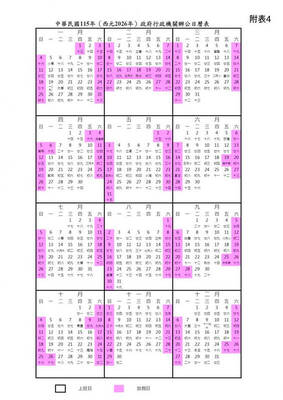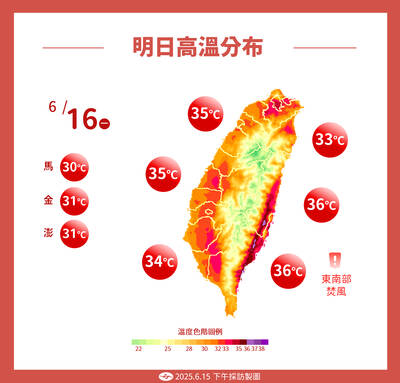Incense used in temples, home altars and on ceremonial occasions have been found to release benzene, among a host of other organic compounds, into the air when burnt, Environmental Protection Agency (EPA) officials said yesterday.
The most highly polluting incense of the five types the agency tested raised the concentration of benzene in the testing room to 7.6 parts per million from a background concentration that was too low to be detected, the agency said.
Yang Chen-chang (
"Benzene's status as a grade one carcinogen is not in doubt," he said, adding that long-term exposure could result in an increased likelihood of leukemia and aplastic anemia.
The study, which sampled different varieties of incense commonly burnt as spiritual offerings, was conducted by the EPA's Environmental Analysis Laboratory at the behest of Chinese Nationalist Party (KMT) Legislator Chen Chao-rung (陳朝容).
"Good incense should be made from sandalwood and agarwood," Chen said. "Inferior incense can contain any number of chemical compounds. There is currently no way for consumers to determine the quality of their incense."
Chen called upon the Bureau of Standards, Metrology and Inspection under the Ministry of Economic Affairs to step up testing of incense for ingredients that do not meet national standards.
In addition to calling on the EPA to amend the draft statute governing indoor air quality management to include temples among the indoor spaces that are governed by the statute and present it to the Legislative Yuan as quickly as possible, Chen urged manufacturers to start labeling incense with information about ingredients and country of origin.
The use of incense and burnt paper money is likely to be high over the next few weeks, said Yeh Fang-lu (葉芳露), a senior engineer with the EPA's Air Quality Protection and Noise Bureau, as it is customary to hold ceremonies offering food and incense to the spirit realm in the seventh lunar month, better known as "Ghost Month" (鬼月), when it is believed the gates to the underworld are opened. Ghost month began on Monday.

Taiwan is to have nine extended holidays next year, led by a nine-day Lunar New Year break, the Cabinet announced yesterday. The nine-day Lunar New Year holiday next year matches the length of this year’s holiday, which featured six extended holidays. The increase in extended holidays is due to the Act on the Implementation of Commemorative and Festival Holidays (紀念日及節日實施條例), which was passed early last month with support from the opposition Chinese Nationalist Party (KMT) and Taiwan People’s Party. Under the new act, the day before Lunar New Year’s Eve is also a national holiday, and Labor Day would no longer be limited

COMMITMENTS: The company had a relatively low renewable ratio at 56 percent and did not have any goal to achieve 100 percent renewable energy, the report said Pegatron Corp ranked the lowest among five major final assembly suppliers in progressing toward Apple Inc’s commitment to be 100 percent carbon neutral by 2030, a Greenpeace East Asia report said yesterday. While Apple has set the goal of using 100 percent renewable energy across its entire business, supply chain and product lifecycle by 2030, carbon emissions from electronics manufacturing are rising globally due to increased energy consumption, it said. Given that carbon emissions from its supply chain accounted for more than half of its total emissions last year, Greenpeace East Asia evaluated the green transition performance of Apple’s five largest final

Taiwan is to extend its visa-waiver program for Philippine passport holders for another year, starting on Aug. 1, Minister of Foreign Affairs Lin Chia-lung (林佳龍) said on Friday. Lin made the announcement during a reception in Taipei marking the 127th anniversary of Philippine independence and the 50th anniversary of the establishment of the Manila Economic and Cultural Office (MECO) in Taiwan, the Ministry of Foreign Affairs said. The decision reflected Taiwan’s commitment to deepening exchanges with the Philippines, the statement cited Lin as saying, adding that it was a key partner under the New Southbound Policy launched in 2016. Lin also expressed hope

Temperatures in New Taipei City’s Sindian District (新店) climbed past 37°C yesterday, as the Central Weather Administration (CWA) issued heat alerts for 16 municipalities, warning the public of intense heat expected across Taiwan. The hottest location in Taiwan was in Sindian, where the mercury reached 37.5°C at about 2pm, according to CWA data. Taipei’s Shilin District (士林) recorded a temperature of 37.4°C at noon, Taitung County’s Jinfeng Township (金峰) at 12:50 pm logged a temperature of 37.4°C and Miaoli County’s Toufen Township (頭份) reached 36.7°C at 11:40am, the CWA said. The weather agency yesterday issued a yellow level information notice for Taipei, New